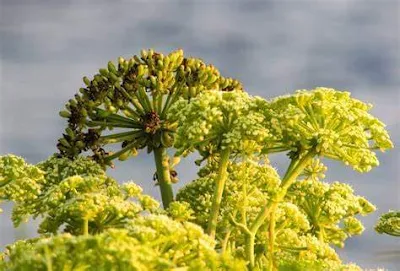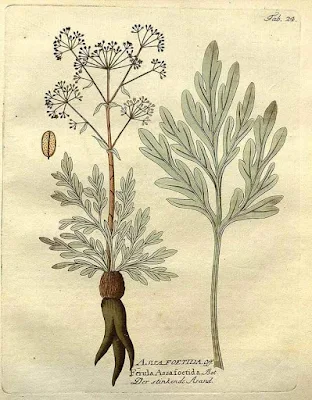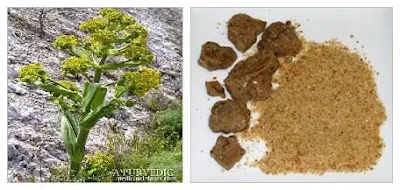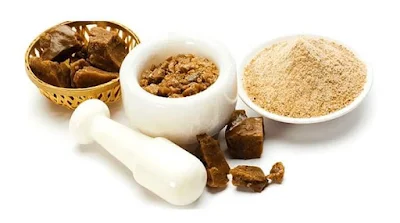Asafoetida or Heeng, a stinking plant derived gum before cooking, looses its stink completely when cooked and transforms the food into a highly palatable dish
Asafoetida or Heeng
Did you know that Asafoetida or Heeng, a stinking plant derived gum before cooking, looses its stink completely when cooked and transforms the food into a highly palatable dish?
Asafoetida or asafetida known in Indian languages as Hing हींग
In Hindi, Hing ಹಿಂಗ್ in Kannada, Peruṅkāyam பெருங்காயம் in Tamil, is the dried latex or oleogum resin exuded from the tap roots of perennial herbs to a few species of the genus Ferula of the family Apiaceae (Umbelliferacaca). A native of Iran with scientific name Ferula assafoetida, name assafoetida is derived from the Persian word for resine 'asa’ and the Latin word foetida. Its sulphurous aroma is stronger than of garlic and hence it is called as devil's dung, stinking gum, asant and hing.
Its predecessor plant, Silphium an ancient spice from the region of Cyrene (in modern Libya) was popular in ancient Rome and Greece for cooking and medicine but became extinct by the end of the first century AD. There are now 170 known species of the genus Ferula found mainly in three geographical areas, Central Asia (Afghanistan and Iran), Europe and North Africa.
Asafoetida’s history, thought to be the famed silphium of Cyrene of North Africa now extinct, is an early Mediterranean plant and travelled by land across Iran, entered Europe from an expedition of Alexander the Great (300 BC), and eventually became more popular amongst cooks as well as physicians. The imported raw Asafoetida is processed in India and a large amount (more than 100 metric tonnes) is exported to 25 countries.
The ancient Sanskrit text "Kashyapa Samhita" mentions the import of Asafoetida from Afghanistan which over the centuries became an essential ingredient in Indian cooking as well as in the preparation of traditional medicines in Ayurveda.
In India, there are two popular varieties in use as Hing or Heeng known by its source as Irani Hing or Pathani Hing of Afghanistan. Ushak is another gum variety similar to Asafoetida but obtained from a different genus of the family Umbelliferae, a plant found in precincts of the temple of Ammon in Egypt, Greece and Rome. During the Italian Renaissance, asafoetida was used as part of the exorcism rituals.
Chemically it has volatile oil (10–17%) , gum (25%), resin (40–64%) , and ash (1.5–10%) as constituents. The resin portion is known to contain asaresinotannols A and B, ferulic acid, umbelliferone and four unidentified compounds, and its characteristic odour lies in the oil.
The plant grows to a height of about 2 m and has a perennial fusiform root that is either simple like a parsnip or has more forks. Bark of the root is wrinkled and blackish and the internal structure is fleshy and white, containing a large amount of thick, milky, fetid , alliaceous juice. Leaves are few in number and appear in autumn. Commercial asafetida is extracted from the roots.
Asafoetida's nutritional and medicinal value is attributed to minerals like Sulphur and Phosphorus and vitamins such as riboflavin and niacin. Its therapeutic use in Indian Ayurveda is extensively dealt in Charaka Samhita, Sushruta Samhita and Ashtanga Sangraha, and is generally recommended for treating asthma, pain relief, gastrointestinal disorders. A well known Ayurvedic preparation based on Asafoetida along with other herbs is the Hingavashtaka churna used as remedy for indigestion.
In India, though it has always been an imported item, but now efforts are being made to grow it in specifically identified dry and desertic cold areas where it can thrive, as in Himachal Pradesh. Seeds have been imported from Iran and distributed to several farmers through Indian Council of Agricultural Research (ICAR).
Nothing is more widely used in every part of India, both in medicine and in cookery, than this product of the rhizome or tap root of several species of Ferula (F. foetida and F. assa-foetida).
In India, some Brahmins and Jains who are strict vegetarians, shun using garlic prefer to use Asafoetida. It is almost a must ingredient in South Indian vegetarian dishes.
In its pure form, it is sold in the form of chunks of resin, small quantities of which are scraped off for use. The odor of the pure resin is so strong that the pungent smell will contaminate other spices stored nearby if it is not stored in an airtight container.
In recent years, a few studies of the potential use of asafoetida in modern medicine have been initiated. An investigation on the effect of extracts of asafoetida and certain other food additives noted that asafoetida extract inhibited aflatoxin production significantly.
- Narasipur Char

























Comments
Post a Comment